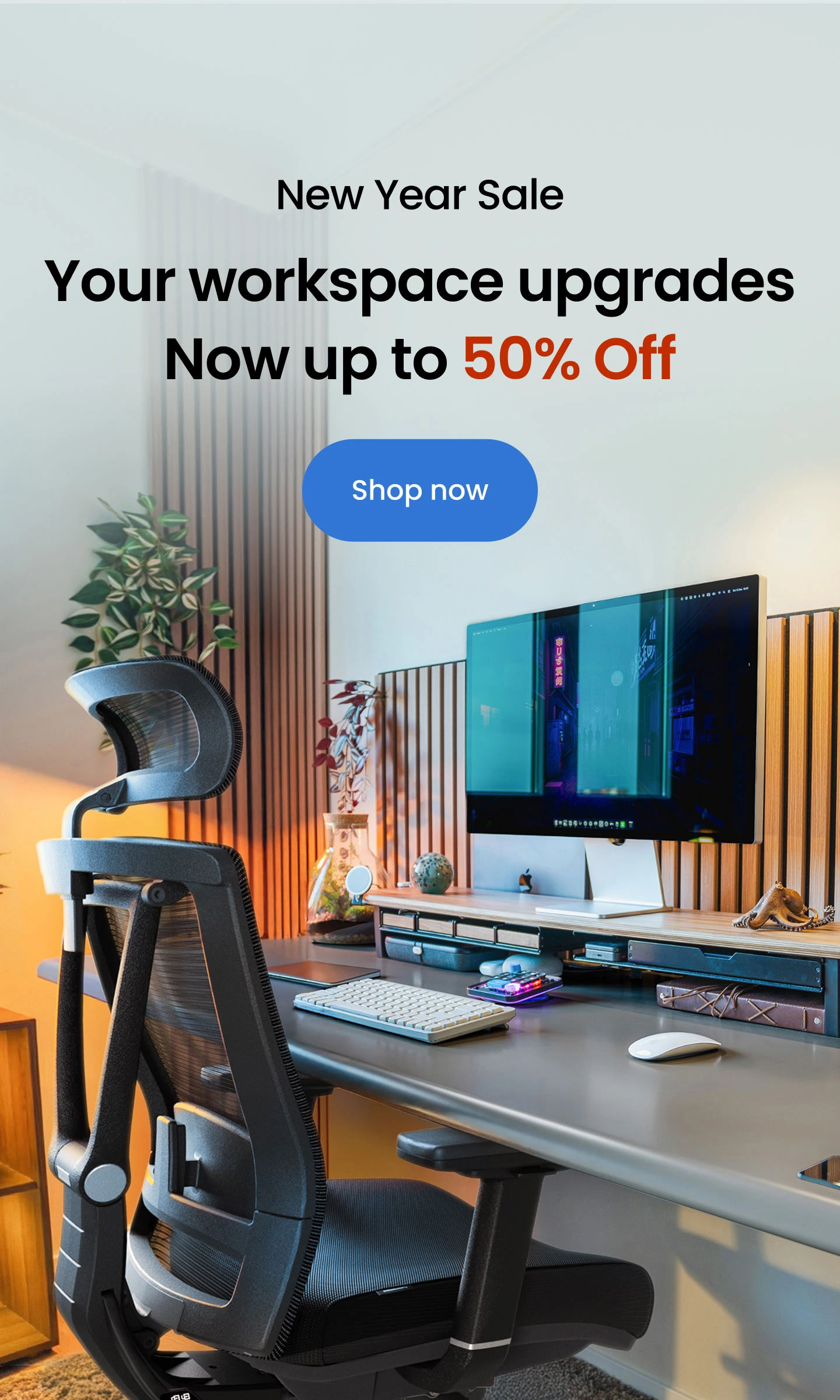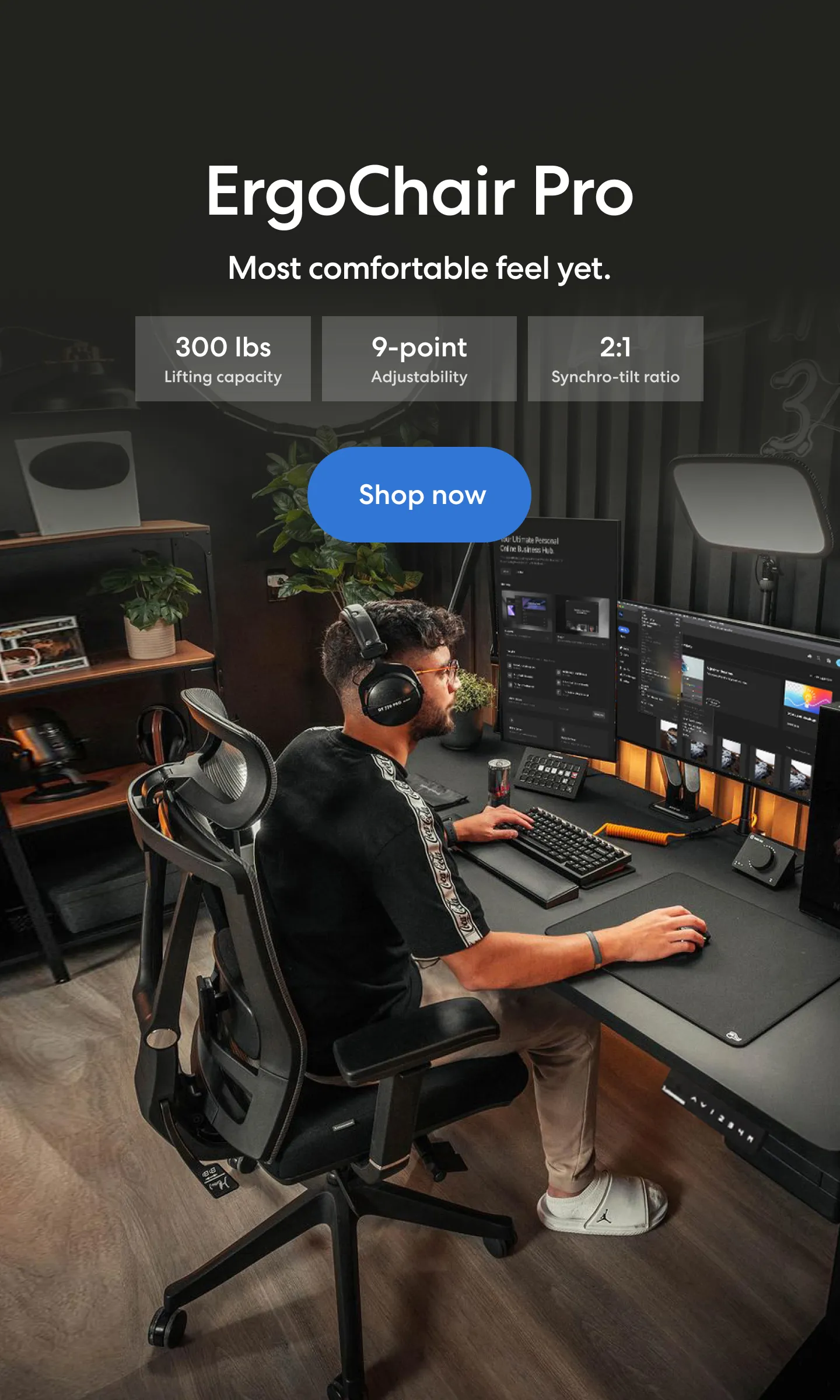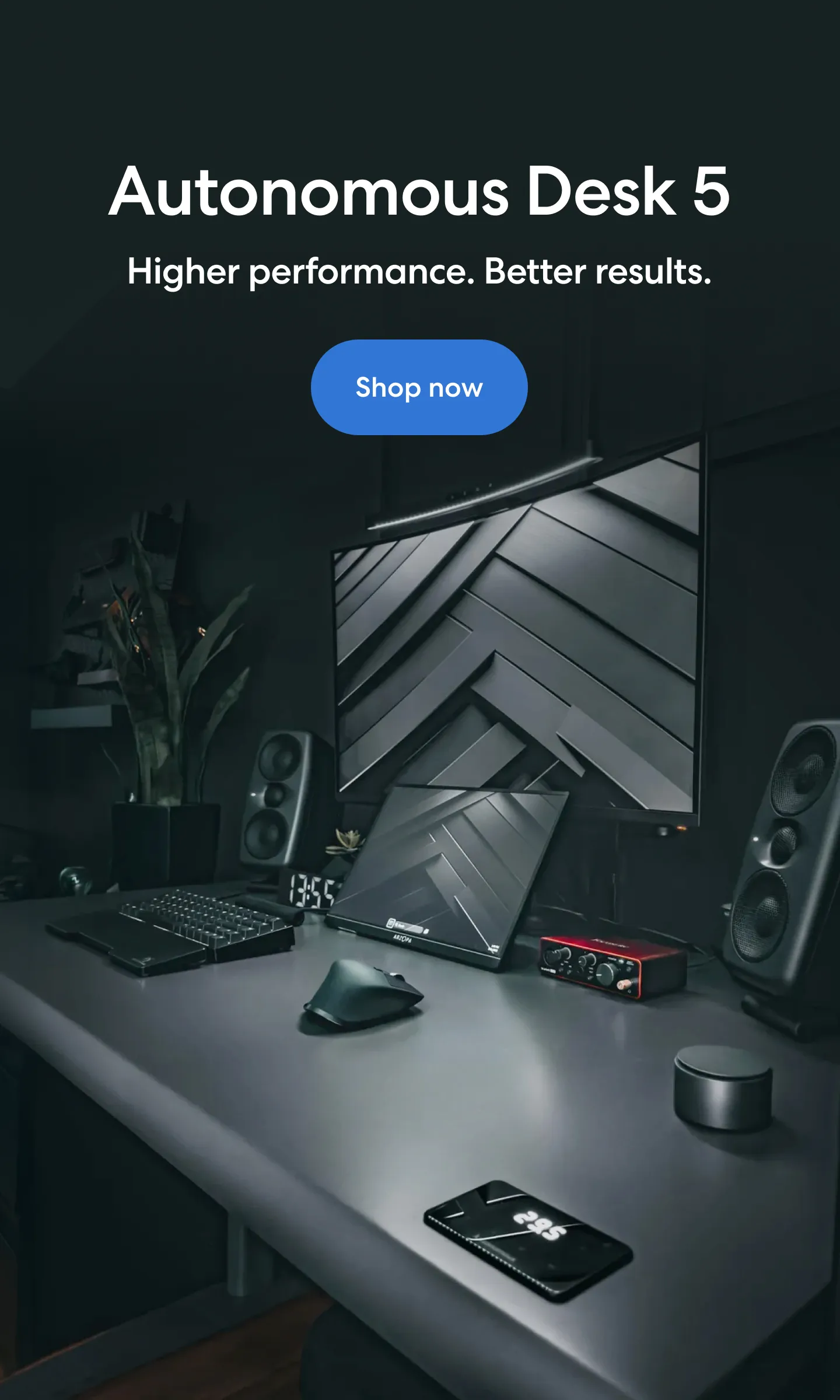.webp)
How To Choose The Best Leather High-Back Office Chair?
Table of Contents
- Understanding Common Leather Types In High-Back Office Chairs
- How Long Do Leather High-Back Office Chairs Really Last?
- Common Wear And Tear In Leather High-Back Office Chairs
- How To Extend The Life Of A Leather High-Back Office Chair
- Cost vs. Value: Is Leather Worth It?
- Choosing The Right Leather High-Back Office Chair For Your Needs
- FAQs
- Conclusion
A leather high-back office chair is more than just a statement piece—it’s designed to deliver comfort, posture support, and a professional look that fits both professional and home office setups. Known for its supportive design and timeless look, a leather office chair adds a sense of authority while also keeping posture in check. But one question often comes up before investing: how long does it really last?
This guide breaks down what to expect from bonded, genuine, and faux leather, along with care tips to help you choose wisely. Think of it as both an overview and a buying guide to finding the right chair for your needs.
Understanding Common Leather Types In High-Back Office Chairs
The type of leather used in a leather high-back office chair makes a bigger difference than most people realize. It doesn’t just affect appearance—it determines how the high-back office chair feels on your skin, how well it holds up under daily use, and whether it’s truly a long-term investment.
Understanding the main categories of leather will help you narrow down your options before you buy.
If you’re exploring options, it also helps to compare different office chair materials to understand how leather stacks up against fabric, mesh, or other finishes.
1. Bonded Leather
Bonded leather is created by blending leftover leather fibers with polyurethane, then stamping it to mimic the look of genuine hide. You’ll often see it in budget-friendly high-back desk chair leather models, especially when browsing options for an affordable office chair.
While it delivers the executive look at a fraction of the price, it has a much shorter lifespan. Daily friction from sitting, especially along the seat and armrests, can lead to peeling and cracking in as little as two years.
It’s a good choice if style matters more than longevity, or if you need an office chair for a space that doesn’t see heavy use, such as conference rooms.
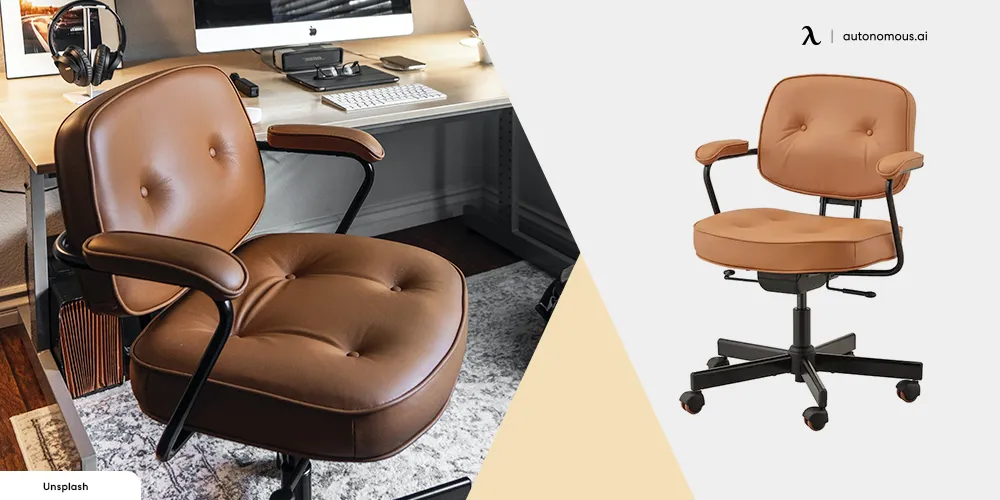
2. Genuine And Top-Grain Leather
Genuine leather, particularly top-grain, is the gold standard for a high-back executive office chair leather model. This material is strong, breathable, and tends to develop a rich patina over time. Unlike bonded leather, which wears down, genuine leather becomes more comfortable with age when properly maintained.
A high-back executive chair leather design made with top-grain hide can easily last a decade or more, making it ideal for professionals who spend long hours at their desk.
Beyond durability, genuine leather office chairs also provide a cooler, more natural seating surface that adapts to temperature changes in your environment.
3. PU And Faux Leather
PU (polyurethane) and faux leather are synthetic alternatives designed to mimic the real thing. They’re commonly found in modern designs, especially if you’re shopping for a black leather high-back office chair. These materials are appealing for their affordability, stain resistance, and ease of cleaning.
For many buyers, they also pair well with trendy office chair colors, making them a stylish option for modern setups.
However, they don’t have the breathability or resilience of natural leather. Over time, faux leather may harden, crack, or lose its finish—usually within three years under daily use. For buyers who want the look of leather without the high price tag, it’s a practical but short-term options.

Choosing The Right Leather For You
Ultimately, your choice depends on how you’ll use the chair. A brown leather high-back office chair made with genuine hide might be perfect for a warm, traditional office that prioritizes longevity.
Meanwhile, a faux or bonded leather chair may suit a modern and minimalist office design where style and affordability outweigh durability. If ergonomics matter most, pairing genuine leather with adjustable lumbar and tilt functions ensures not only comfort but also value over time.
How Long Do Leather High-Back Office Chairs Really Last?
When you invest in a leather high-back office chair, one of the first questions is how long it will last. The answer depends largely on the type of leather, how often you use the chair, and how well it’s maintained. Here’s a breakdown of what you can expect from each material:
Leather Type | Average Lifespan | What to Expect | Best Use Case |
Bonded Leather (common in many high-back desk chair leather models) | 2–3 years | Peels and cracks on the seat and armrests with daily use. Feels premium at first, but wears quickly. | Occasional seating, like guest offices or conference rooms. |
Genuine / Top-Grain Leather (seen in premium high-back executive office chair leather designs) | 7–10 years (or longer with care) | Ages well, developing a patina instead of peeling. Softens over time and stays durable under heavy use. | Professionals who sit for long hours need lasting comfort and support. |
PU / Faux Leather (often found in modern black leather high-back office chairs) | 1–3 years | Affordable and stylish, but prone to cracking and fading. Less breathable than real leather. | Short-term setups or budget-friendly offices needing a sleek look. |
Other Factors That Influence Lifespan
- Usage – Chairs used for 8+ hours daily will naturally wear faster than those used occasionally.
- Weight capacity – Exceeding or nearing the weight limit shortens structural life.
- Climate – Heat and humidity accelerate drying and cracking.
- Care routine – Regular cleaning and conditioning can add years to a brown leather high-back office chair or any genuine leather model.
With the right choice and proper upkeep, your leather high-back desk chair can be either a short-term style upgrade or a decade-long ergonomic investment.
Common Wear And Tear In Leather High-Back Office Chairs
Even the best leather high-back office chair shows signs of use over time. Knowing what typically wears out first can help you spot early warning signs and decide whether repair, upkeep, or replacement is the smarter choice.
1. Upholstery Issues
- Peeling And Cracking:
Bonded and faux leather often break down in high-contact areas like the headrest, lumbar support, and seat edge. Once peeling begins, it spreads quickly, though in some cases, you can extend the life of the chair by reupholstering a leather office chair.
- Fading And Discoloration:
A brown leather high-back office chair may lighten in direct sunlight, while a black leather high-back office chair can lose its deep tone and appear gray or patchy.
- Surface Hardening:
Faux leather in particular can stiffen over time, making the chair less comfortable.
.webp)
2. Cushion And Support Breakdown
- Seat Sagging:
Foam inside the seat gradually compresses, reducing ergonomic support and putting extra pressure on your lower back.
- Lumbar Support Weakening:
On high-back executive chair leather designs, the lumbar section may lose shape, reducing the ergonomic benefits.
- Armrest Wear:
Padded armrests flatten or split, especially if upholstered in bonded leather.

3. Structural Concerns
- Tilt And Recline Mechanism:
Frequent adjustments put stress on internal parts. Lower-quality chairs may squeak or lose smooth motion within a few years.
- Base and Casters:
Plastic bases wear down faster, while metal bases tend to last longer. Rolling casters can also flatten or jam with heavy daily use.
- Frame Stress:
Overloading the weight capacity or leaning heavily can bend or loosen the chair’s frame.
4. Ergonomic Comfort Decline
One of the less visible—but most important—signs of wear is when the chair no longer provides the support it once did.
A high-back executive office chair with leather should keep you upright with good posture. When cushioning flattens or the backrest loses resistance, you may feel sore after sitting, signaling the chair is past its prime.
.webp)
How To Extend The Life Of A Leather High-Back Office Chair
A leather high-back office chair can last years longer with the right care routine. Think of it as maintaining both the look and the ergonomic comfort that keeps you supported. For best results, follow a proper guide on how to clean an office chair to keep the material fresh and prevent early wear
Here’s how to make your chair go the distance:
Step 1: Clean Regularly
- Wipe the chair down weekly with a damp cloth to remove dust and oils.
- Use a mild leather cleaner every month, focusing on high-contact areas like the seat, lumbar section, and armrests.
- For faux leather, avoid harsh chemicals that can strip the finish.
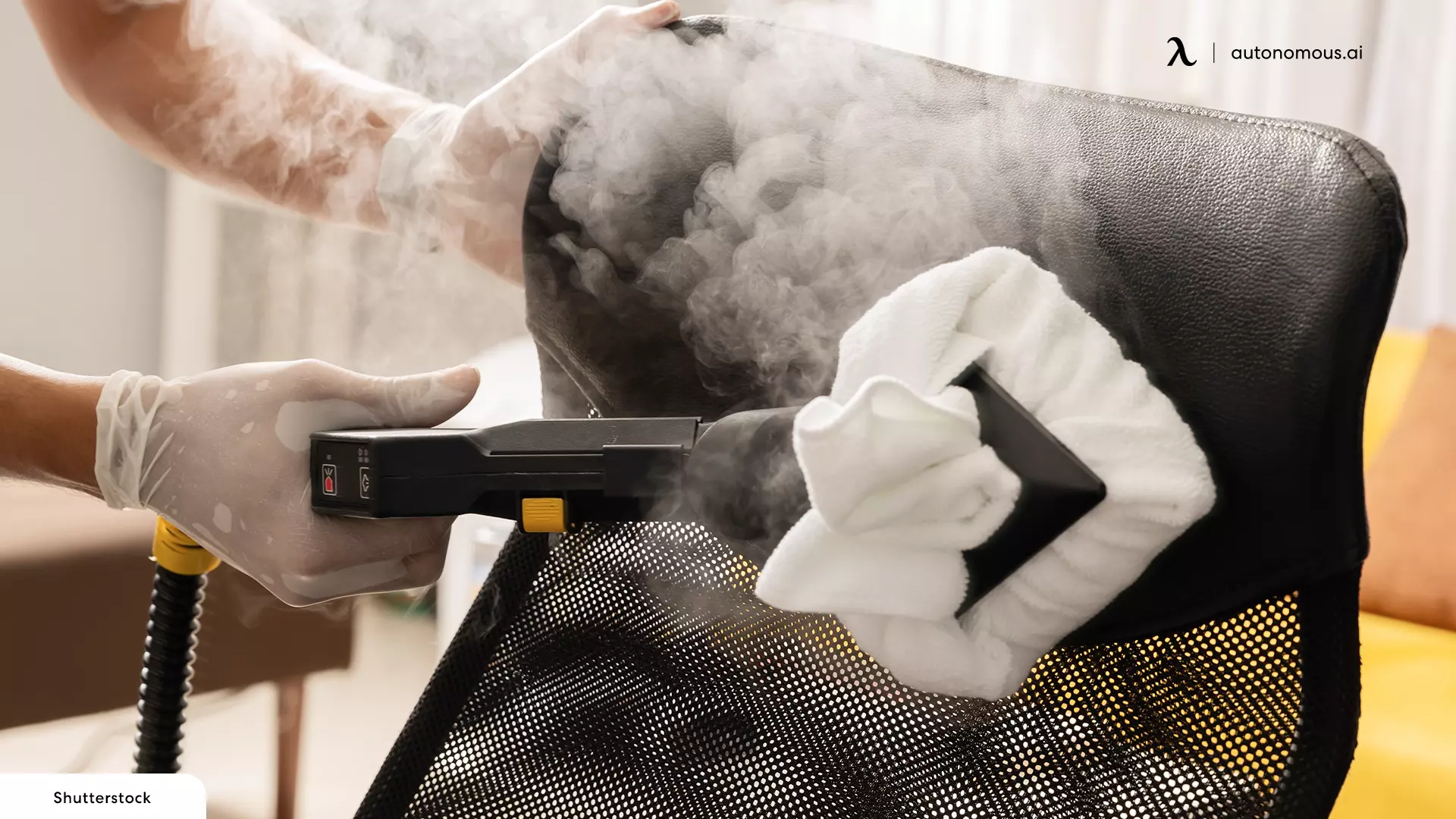
Step 2: Condition The Leather
- If your chair is genuine leather, apply conditioner every 6–12 months. This keeps the hide soft and prevents cracking.
- Pay extra attention to brown leather high-back office chairs, which can show dryness more visibly than black finishes.
Step 3: Protect From Sun And Heat
- Keep your chair away from direct sunlight or heating vents. UV rays can fade a black leather high-back office chair, while heat dries out genuine hide.
- If your workspace gets strong daylight, consider blinds or UV-filtering film on windows.
Step 4: Support The Base And Casters
- Use a chair mat on hard floors or carpet. This reduces rolling resistance and prevents caster damage.
- Check casters every few months and replace them if they flatten or jam.
(1).webp)
Step 5: Handle Wear Early
- Small cracks can often be repaired with a leather filler kit.
- Replace worn armrest covers or seat cushions before the damage spreads to the frame.
- Tighten screws on the tilt and recline mechanism regularly to prevent squeaking or instability.
Step 6: Rotate Usage If Possible
- If you own multiple chairs, rotate them between rooms or users. This evens out wear and prolongs each chair’s lifespan.
With these steps, a high-back executive office chair leather model can last well over a decade, while even bonded and faux leather chairs can give you more value than their usual timeline.
Cost vs. Value: Is Leather Worth It?
When shopping for a leather high-back office chair, the price range can feel wide—bonded leather chairs may cost a fraction of what genuine leather models do. But the real question is whether the investment pays off in comfort and longevity.
1. Bonded Leather
- Cost: Budget-friendly, often the cheapest option.
- Value: Good for style on a tight budget, but with a lifespan of only 2–3 years, replacement costs can add up quickly.
- Best Fit: Occasional seating or short-term setups where appearance matters more than durability.
2. Genuine / Top-Grain Leather
- Cost: Higher upfront price, especially in a high-back executive office chair leather model with full ergonomic features.
- Value: Can last 7–10 years or more with care, meaning you buy once and keep it for a decade. The patina it develops adds character, making it better with age.
- Best Fit: Professionals who spend long hours seated and want lasting ergonomic comfort.
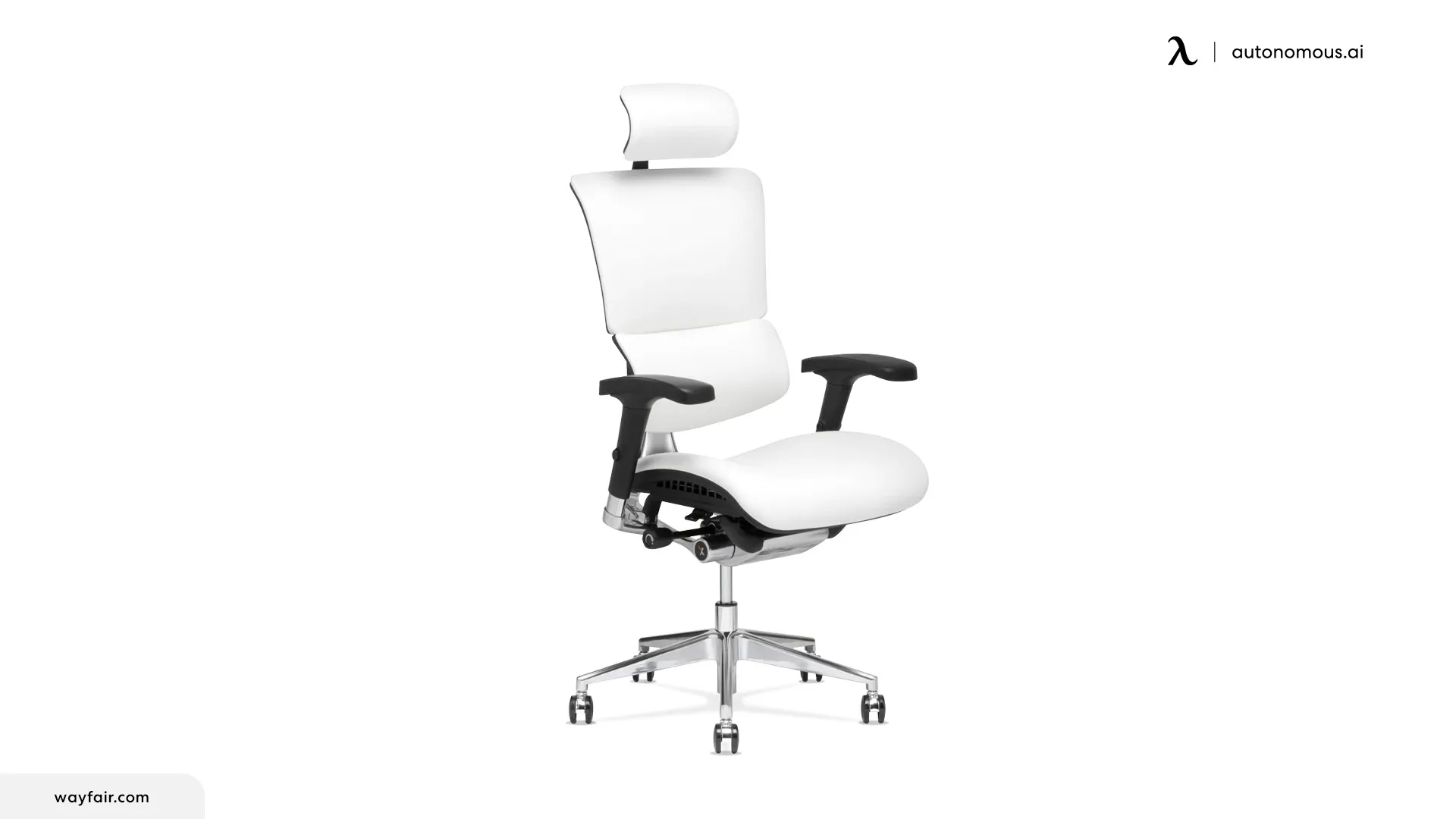
3. PU / Faux Leather
- Cost: Affordable, slightly more than bonded leather but still far below genuine options.
- Value: Stylish and easy to clean, but usually lasts only 1–3 years. Works as a quick upgrade rather than a long-term solution.
- Best Fit: Modern workspaces on a budget, such as startups or home offices with light use.
4. The Long-Term Math
At first glance, a black leather high-back office chair in bonded leather may seem like a bargain compared to a premium top-grain model. But replacing it every few years often ends up costing more than a single high-quality investment.
For daily use, genuine leather provides both the ergonomic support and durability that justify its price. For occasional or decorative use, bonded or faux leather may be enough.
Choosing The Right Leather High-Back Office Chair For Your Needs
Not every workspace requires the same kind of chair, and the “right” option depends on how you’ll use it. A leather high-back office chair can serve different purposes, from making an impression in a boardroom to providing all-day ergonomic comfort in a home office.
- For occasional or guest seating:
A high-back desk chair leather made whether bonded or faux leather, works well. It looks polished, won’t stretch your budget, and suits spaces where the chair isn’t used daily.
- For daily, long-hour work:
A leather high-back executive office chair with genuine hide is the smarter choice. It holds up to wear, adapts to your body over time, and provides reliable ergonomic support.
- For modern or minimal setups:
A black leather high-back office chair pairs well with sleek interiors, while a brown leather high-back office chair adds warmth to traditional or homey environments.
By matching the leather type and design to your actual usage, you’ll avoid overspending while still getting the comfort and style you need.
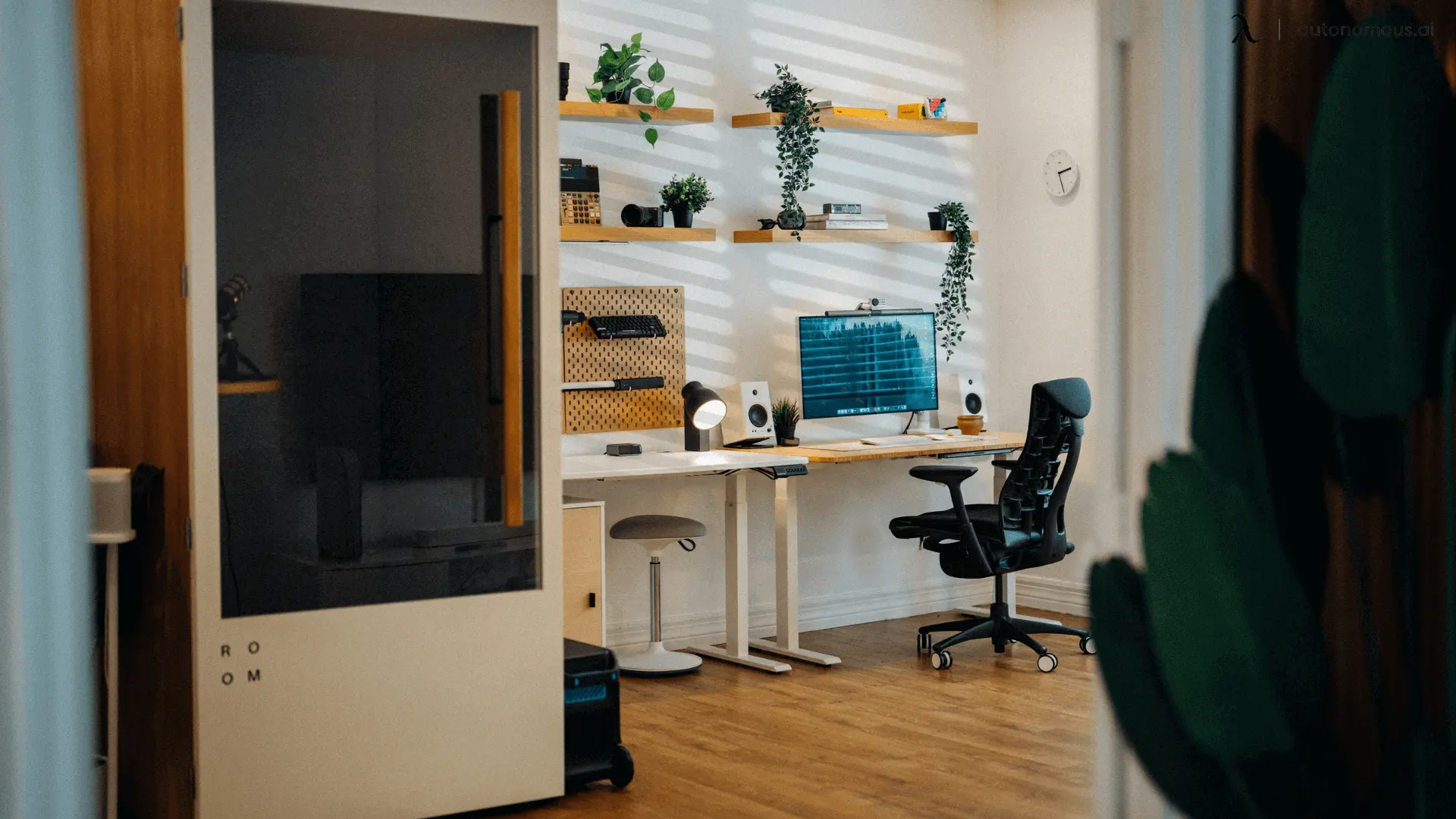
FAQs
1. Are leather high-back office chairs good for long hours?
Yes, a leather high-back office chair provides ergonomic support through its tall backrest, which helps align the spine and reduce strain during long work sessions. Genuine leather options also stay comfortable by adapting to temperature changes.
2. How long does a leather high-back office chair last?
The lifespan depends on the material. Bonded leather usually lasts 2–3 years, faux leather 1–3 years, while genuine leather high-back office chairs can last 7–10 years with proper care.
3. What is the difference between bonded and genuine leather high-back chairs?
Bonded leather is made from scraps and polyurethane, making it affordable but prone to peeling. Genuine leather is stronger, ages better, and provides a longer lifespan, especially in high-back executive office chair models.
4. Do leather high-back office chairs peel over time?
Bonded and faux leather chairs are prone to peeling after regular use, often starting at the seat and armrests. Genuine leather does not peel but may develop a natural patina instead.
5. Are leather high-back executive chairs ergonomic?
Many high-back executive office chair leather models include ergonomic features like lumbar support, tilt adjustments, and cushioned headrests. These features improve posture and make them suitable for long hours at a desk.
6. Can a leather high-back office chair help with posture?
Yes, an office chair designed for spine support promotes upright sitting. When combined with ergonomic adjustments, it reduces strain on the neck and shoulders.
7. How can I stop my leather high-back chair from cracking?
Keep it away from direct sunlight or heating vents, and regularly apply conditioner if it’s genuine leather. This prevents the material from drying out and extends the lifespan of the chair.
8. What’s the best leather high-back office chair for home offices?
For everyday work, a genuine leather high-back executive chair is ideal since it balances ergonomic features with durability. For budget setups, bonded or faux leather high-back chairs offer style at a lower cost.
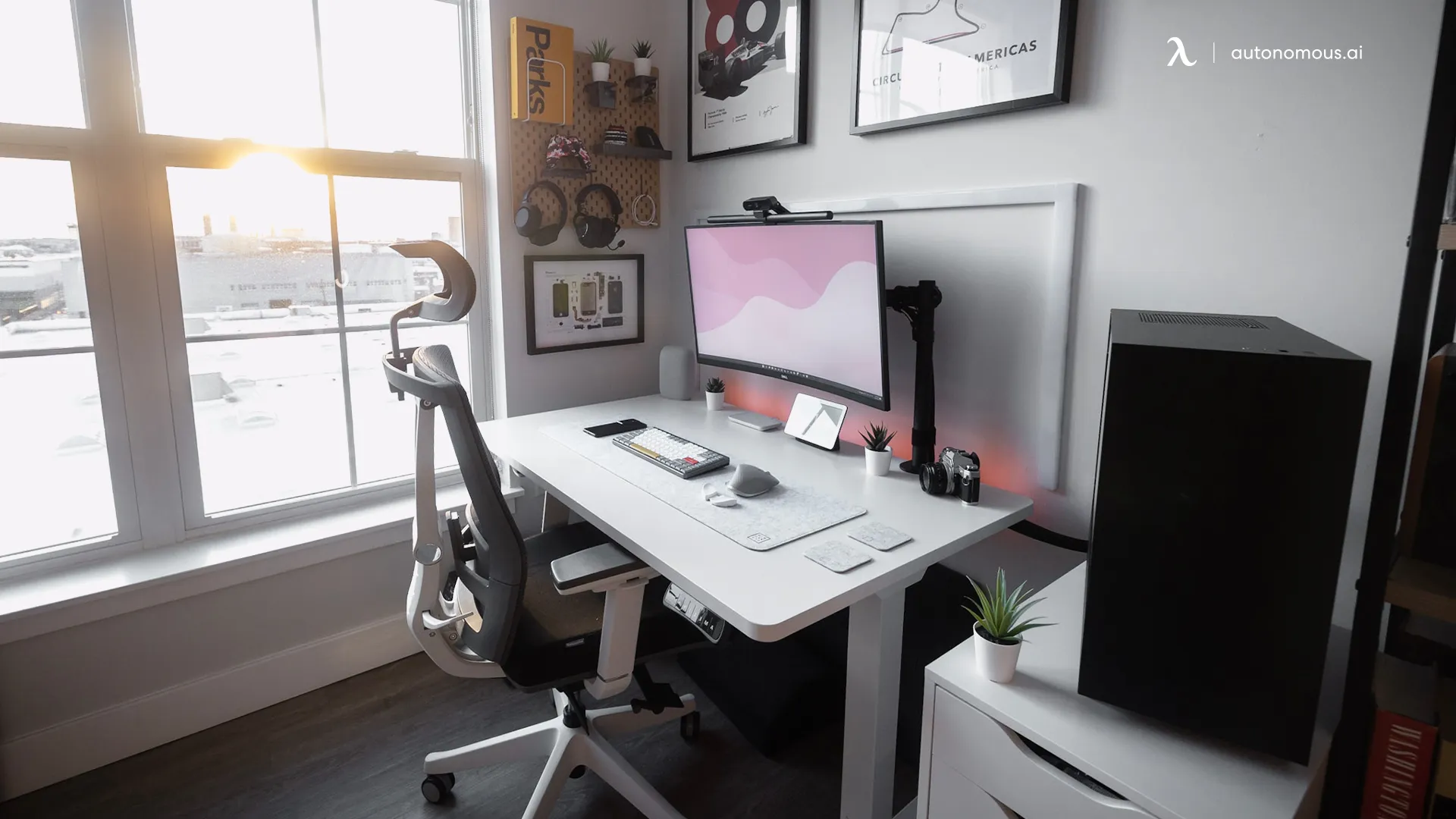
Conclusion
A leather high-back office chair offers more than executive looks—it’s about combining comfort, support, and long-term value. Bonded and faux leather deliver affordable style but come with shorter lifespans, while genuine leather provides durability that can span a decade or more with proper care.
If you’re looking for a quick upgrade, budget-friendly options will do the job. But if you want a chair that supports you day after day, a genuine high-back executive chair leather model is an investment that pays off in both posture and productivity.
In the end, the best choice comes down to how you balance style, budget, and how many hours you’ll spend in the chair. With the right decision, your chair won’t just complete your workspace—it will enhance the way you work.
Spread the word
.svg)


